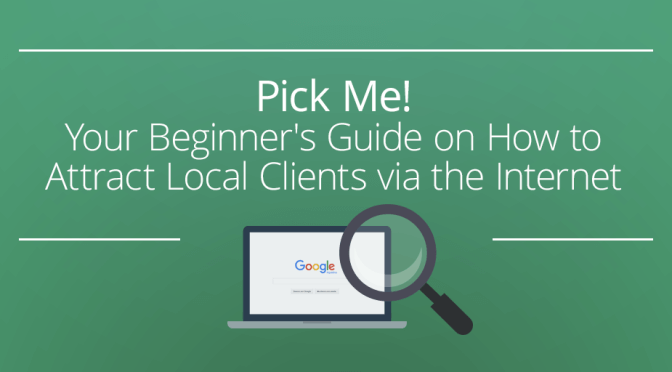You’ve heard of email lists and how you need to build one, right? Or maybe you haven’t.
Not to worry. In today’s post, we’re going to delve right into what an email list is, why you need to build one, and how to get people to subscribe to your list.
What is an email list?
An email list is a catalog of email addresses that you’ve collected. You may collect these email addresses from your website visitors, social media followers, or the prospects who’ve stopped by your law firm to inquire about your services.
An email list should always consist of those who’ve willingly volunteered their email address. It’s never a good idea to purchase or rent email addresses, for more than one reason.
Why do I need an email list?
These days, having a website isn’t enough. An estimated 500 websites are created every minute. That means that a site visitor can easily leave your website, never to return again. That’s not because they don’t want to return– maybe they’ve simply forgotten how to find you.
That’s why an email list is crucial. When a visitor loves the information on your site and signs up to receive regular emails from you, you don’t have to worry about them getting lost ever again.
Here are a few other reasons you need an email list:
It helps you stay top of mind. Your email subscribers may not need your services yet, but if you keep in contact with them on a regular basis, they’ll know where to turn when the time arises.
It provides valuable information to your email subscribers. You can educate your email subscribers and keep them in the know about things going on in your practice.
You own your email list. You may have a lot of fans and followers on social media, but at any moment, a social platform could deactivate your account and poof! goes all of your hard work. With an email list, you’ll always have access to your subscribers.
Email is better than social media. A post on a social media timeline or profile only lasts for a few moments before new posts take their place. With email, you have a permanent spot in a subscriber’s inbox until they manually delete you.
How do I get people to subscribe to my email list?
To get people to subscribe to your email list, you need to present it as an option. People won’t subscribe if they don’t know about your email list. They won’t go searching for it, either.
Here’s how to get people to join your email list:
Ask them. It may seem obvious to you, but it’s not obvious to visitors. They may not notice your email list unless you tell them it’s there. Ask in your blog posts, on your website (have a permanent spot for email signups– we’ll help you with this), and on your social media pages.
Give them a reason. Sometimes, asking isn’t enough. You may also need to encourage them with a lead magnet. This lead magnet will draw subscribers in and give them an instant reward for signing up to your email list.
[Tweet “Sometimes, asking isn’t enough. You may also need to encourage them with a lead magnet. “]Wait, what’s a lead magnet?
You’ve seen lead magnets before, but probably didn’t know them by name. A lead magnet is an incentive offered to site visitors in exchange for their email addresses.
A lead magnet should be valuable and relevant for site visitors. It’s not about stroking your ego (i.e. ‘check out why we’re so great’). It should be about helping, informing, or entertaining your audience.
We have our very own lead magnet right here on our site. By entering your first name and email address here, you’ll receive a weekly marketing plan delivered straight to your inbox.
Join our weekly marketing plan here
Here are a few takeaways from our lead magnet:
It’s not smarmy. We’re not trying to trick you into joining our email list with smoke and mirrors. You know that by giving us your email address, we’re going to email you.
It’s valuable. It gives something in exchange for joining. We tell you how you’ll benefit from joining our email list (you’ll receive a free actionable plan every week).
It doesn’t ask for too much. Anytime you’re asking your site visitors for more than a name and email address, you’re scaring them away. Keep a simple form for your email signup.
How to create an amazing lead magnet
Now that we’ve gone over what a lead magnet is, it’s time to figure out how to make one that your site visitors will actually want.
First, settle on an idea for your lead magnet. As you can imagine, your lead magnet will vary depending on your area of practice and the needs of your client.
Here’s a few examples for different practice areas:
Bankruptcy – An ebook, Which Chapter of Bankruptcy is Right for Me?
Business – A guide, LLC, Corporation, Sole Proprietorship, Oh My! Which One Should You Choose?
Criminal – A guide, Is Marijuana Still Illegal? A List of States and Their Laws Concerning Marijuana
Entertainment – A video series, How Do I Know If I Need An Entertainment Lawyer?
Family – A guide, A Guide to Calculating Child Support in Your State
Immigration – An ebook, Understanding the Rules of a K-1 Visa
Intellectual Property – A guide, A Step by Step Guide to Copyrighting and Protecting Your Ideas
Labor – A printable, A Printable List of State Labor Laws
Medical – A guide, Medical Malpractice: Should You Settle or Go to Court?
Personal Injury – A checklist, What Should You Do Immediately After Getting Injured on the Job?
Second, create your lead magnet. Don’t worry– it doesn’t have to be fancy. It can be simply created and formatted with a program like Microsoft Word or Pages for Mac. If you don’t have either of those, you can create a lead magnet with the free web-based option Google Docs.
Start by creating an outline of what you’d like to talk about within your lead magnet. Don’t hold back. The more content you can add, the better. Next, type it all out and don’t edit yourself until you’re done. After you’ve written a rough draft, you can come back and edit for clarity and cohesion. Finally, add graphics to your lead magnet to spice it up and inject visual interest. Here’s a list of free stock libraries that you can check out.
Third and finally, set up an account with MailChimp, if you haven’t already. MailChimp is an email marketing service that allows you to send out your lead magnets to new subscribers automatically. Even better– AmazeLaw seamlessly integrates with MailChimp. Set up is easy, but if you have any questions, let us know.
Final Thoughts
Voilà! You’re done. A lead magnet will draw your clients in and grow your email list. You’ll wonder why you didn’t do this sooner.


















 Network with anybody you can get in front of. This includes fellow attorneys for sure, but also expands beyond your colleagues.
Network with anybody you can get in front of. This includes fellow attorneys for sure, but also expands beyond your colleagues.


 Google Search: How to pay for an old ticket
Google Search: How to pay for an old ticket Google Search: Do I own my music if it isn’t registered
Google Search: Do I own my music if it isn’t registered


















 Screenshot of Zachar
Screenshot of Zachar  A
A  A Yelp search for “law firms in Phoenix, AZ”
A Yelp search for “law firms in Phoenix, AZ”







